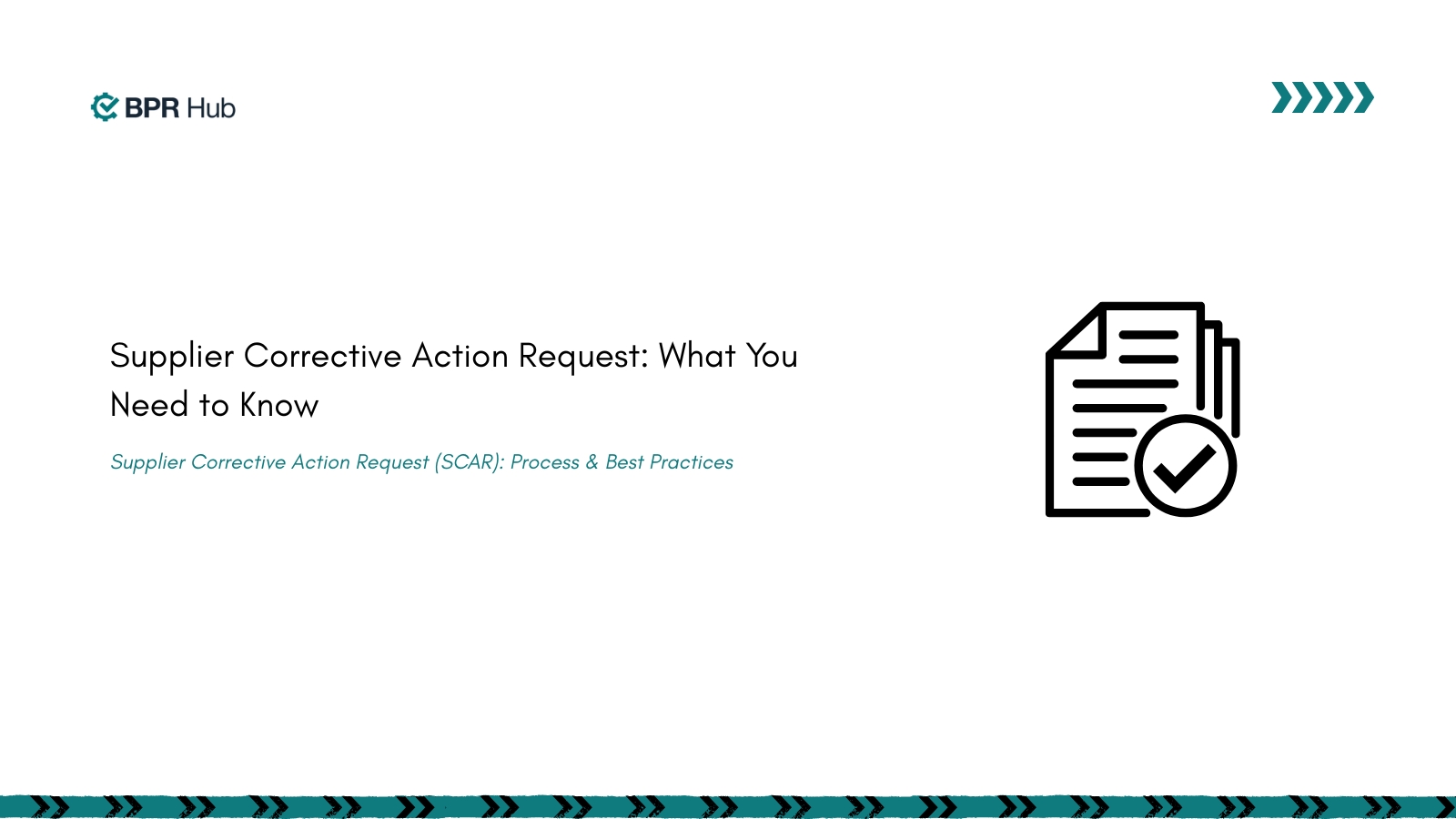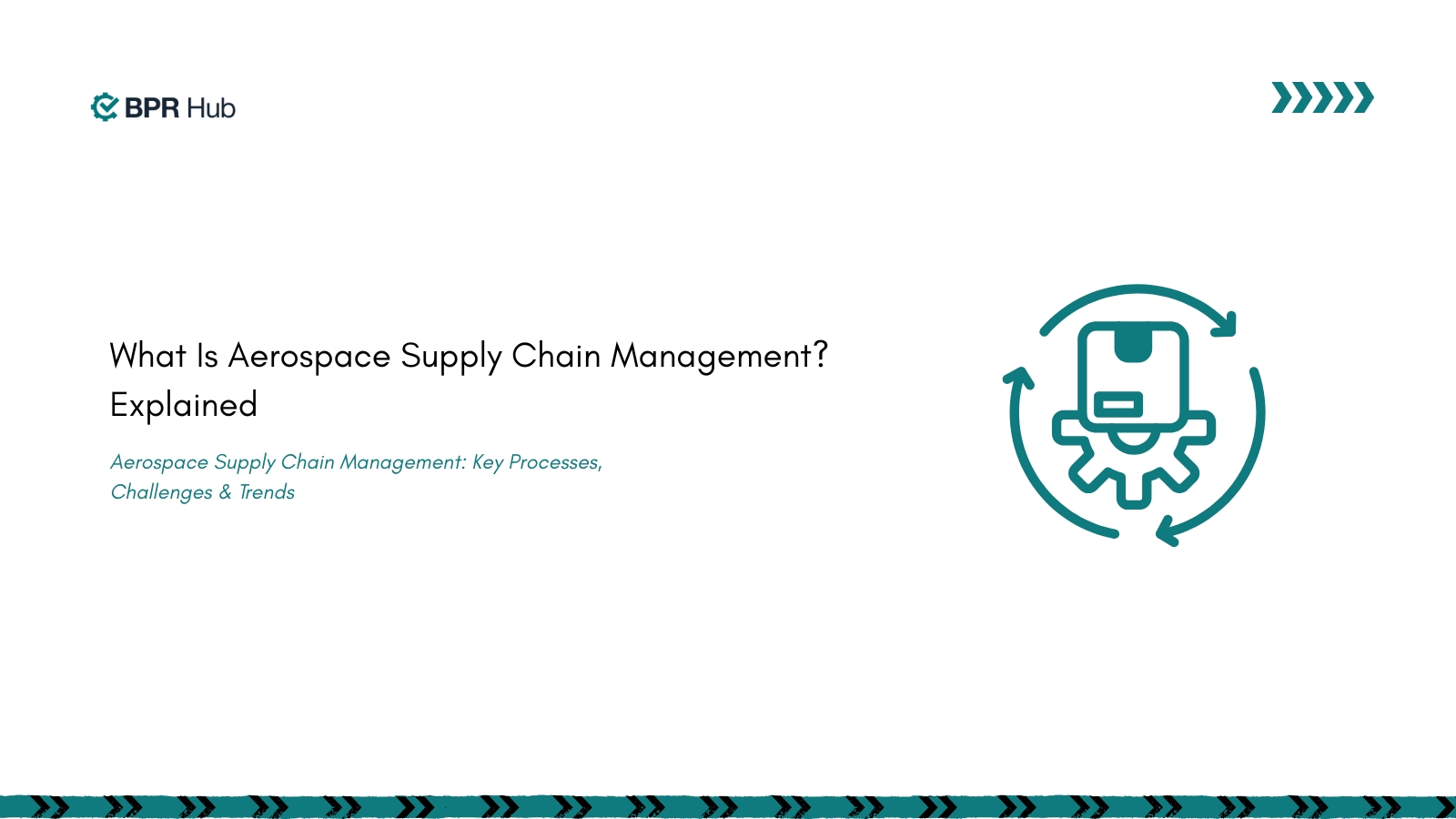When quality failures emerge from your supply chain, swift and systematic action becomes critical. A single nonconforming component can cascade into production delays, customer complaints, or worse, costly product recalls that damage your brand reputation. According to ETQ's 2024 survey of 750 senior-level quality professionals, 35% of respondents say their brand reputation has been negatively impacted by recalls and supplier issues.
The supplier corrective action request (SCAR) emerges as a powerful tool to address these challenges head-on. This formal process transforms supplier quality issues from reactive firefighting into proactive quality improvement, ensuring your supply chain becomes a competitive advantage rather than a liability. For quality managers, operations directors, and compliance officers across manufacturing industries, understanding the SCAR process is essential for maintaining operational excellence and regulatory compliance.
In today's interconnected manufacturing landscape, where the global quality management software market was valued at US$ 11.14 billion in 2024 and is estimated to grow at a compound annual growth rate (CAGR) of 10.6% from 2024 to 2030, implementing robust supplier nonconformity management systems has never been more crucial. Organizations implementing comprehensive quality management systems see significant improvements in supplier performance and operational efficiency.
What Is a Supplier Corrective Action Request (SCAR)?
A supplier corrective action request (SCAR) is a formal document issued by an organization to a supplier when their product, service, or process fails to meet established quality standards. Unlike informal communications, a SCAR represents a structured demand for resolution that mandates comprehensive investigation and systematic corrective action.
The SCAR process requires suppliers to correct immediate issues and document prevention strategies through root cause analysis and corrective action planning. The terminology can create confusion, as SCAR may refer to both the initial request document and the subsequent supplier response report.
Key characteristics include formal documentation with objective evidence, specific requirements for supplier investigation, clear timelines for response, structured problem-solving methodologies like 8D or root cause analysis, and verification mechanisms to ensure corrective actions remain effective.
Organizations typically issue SCARs for product quality failures, delivery delays, non-compliance with specifications, and repeated performance issues that impact operational efficiency.
Why Supplier Corrective Action Requests Are Important
The importance of supplier corrective action requests extends beyond immediate problem resolution, serving as critical components of modern quality management systems, particularly in regulated industries where compliance and traceability are paramount.
Risk Mitigation and Quality Assurance
According to the American Society for Quality (ASQ), many organizations have true quality-related costs as high as 15-20% of sales revenue, with some reaching 40% of total operations. SCARs help reduce these costs by addressing quality issues at their source before they propagate through the supply chain.
Regulatory Compliance and Supply Chain Strengthening
In highly regulated sectors like medical devices, pharmaceuticals, aerospace, and food production, SCARs provide essential documentation for regulatory compliance. Organizations implementing ISO 9001 standards or ISO 13485 requirements benefit significantly from structured SCAR processes. The SCAR process helps ensure that suppliers adhere to regulations such as FDA requirements, resulting in the delivery of safe and effective products and services.
Rather than serving as punitive measures, effective SCARs build stronger supplier relationships through collaborative problem-solving. According to ETQ's manufacturing quality research, 52% of organizations attribute up to half of product recalls to supplier issues, highlighting the critical importance of systematic supplier quality management.
Cost Reduction and Operational Efficiency
Poor supplier quality creates cascading costs throughout manufacturing operations. SCARs help organizations achieve optimal nonconformance levels by systematically addressing root causes rather than symptoms. The financial impact extends beyond immediate production costs to include warranty claims, customer returns, rework expenses, and potential liability issues.
Understanding the SCAR Process Step-by-Step
The SCAR process follows a systematic approach designed to ensure thorough investigation, effective resolution, and sustainable prevention of supplier quality issues. This structured methodology transforms ad-hoc problem-solving into a disciplined quality management practice.
Identifying Supplier Nonconformities
The initial phase begins with detecting and documenting quality issues with objective evidence. This involves collecting inspection reports, photographs, and affected product samples while clearly describing the non-conformance, impact, and quantity of affected items.
Common triggers for supplier nonconformity management include incoming inspection failures, customer complaints traced to supplier materials, internal quality audits revealing supplier deficiencies, production line stoppages, and regulatory findings. Documentation requires precision and objectivity, including part numbers, lot codes, quantities affected, and photographic evidence.
Issuing the Supplier Corrective Action Request
The formal SCAR issuance includes all relevant details: problem description, reference documents, affected part numbers and quantities, and the requested response timeframe. Organizations must specify required supplier actions, including containment measures, root cause analysis expectations, and corrective action planning requirements.
Root Cause Analysis and CAPA Development
Upon receiving the SCAR, suppliers must conduct thorough investigations using structured tools such as 5 Whys, 8D methodology, or Fishbone diagrams. The root cause analysis phase requires suppliers to examine both the failure mode and detection failures, identifying why the problem occurred and why it wasn't detected during quality control processes.
Following root cause identification, suppliers develop Corrective and Preventive Action (CAPA) plans addressing immediate corrections and long-term prevention strategies with specific actions, responsible parties, implementation timelines, and verification methods.
Implementation, Verification, and Closure
The final phase involves implementing corrective actions, verifying their effectiveness, and formally closing the SCAR. Verification activities may include follow-up inspections, performance monitoring, supplier audits, or statistical analysis of subsequent deliveries. Organizations must validate that corrective actions address root causes rather than symptoms.

Key Elements of an Effective Supplier Corrective Action Form
A well-designed supplier corrective action request form serves as the backbone of successful quality improvement initiatives. The form structure and content significantly influence supplier understanding, response quality, and ultimate problem resolution effectiveness.
Essential Components
The form header should capture fundamental identification data, including SCAR number, issue date, supplier information, and priority level. A SCAR typically includes a description of the nonconformance, the date the issue was identified, affected products or services, specific requirements that have not been met, and requested corrective actions.
The problem description should be factual, specific, and supported by objective evidence such as photographs, test results, or inspection reports. When the SCAR is issued, suppliers typically have 14 days or other stipulated time periods to respond.
Required response elements should include immediate containment actions, root cause investigation using structured problem-solving methodologies, corrective action plans with specific actions and timelines, preventive measures, and verification methods to demonstrate effectiveness.
Common Challenges in Supplier Nonconformity Management
Organizations implementing supplier nonconformity management systems frequently encounter obstacles that can undermine SCAR effectiveness. Many suppliers view SCARs as punitive measures rather than improvement opportunities, leading to defensive responses and superficial corrective actions.
Communication challenges, inadequate root cause analysis depth, poor documentation, and lack of verification systems represent the most common implementation barriers. Organizations can address these challenges through supplier education, structured training programs, clear documentation requirements, and systematic follow-up procedures.
Best Practices for Managing Supplier Corrective Actions
Implementing effective supplier corrective action management requires systematic approaches that balance rigor with practicality. Leading organizations develop specific criteria based on risk level, severity, frequency, or customer impact to ensure consistent SCAR application.
Successful SCAR management emphasizes partnership over punishment, framing SCARs as collaboration opportunities. Modern quality management systems enhance SCAR efficiency through automated workflows, real-time tracking, and comprehensive reporting capabilities. Training suppliers on root cause analysis, CAPA development, and documentation requirements improves response quality and reduces cycle times.
Effective measurement drives continuous improvement through tracking response times, closure rates, recurrence frequencies, and supplier performance trends. Organizations should track metrics that demonstrate continuous improvement, including overall supplier quality scores, reduced inspection defects, and enhanced operational efficiency.
Using Digital Tools to Streamline the SCAR Process
Modern supplier corrective action request management benefits significantly from digital transformation initiatives that automate workflows, enhance communication, and provide real-time visibility into supplier performance. According to quality management software research, comprehensive platforms provide end-to-end SCAR lifecycle management.
Digital systems automate routine tasks, including supplier notifications, reminder escalations, and approval workflows. Advanced analytics enable organizations to identify trends and improvement opportunities through real-time dashboards and performance scorecards. Modern platforms provide mobile access and supplier portals for real-time collaboration and controlled access to SCAR information.
How BPRHub Helps Organizations Excel in Supplier Quality Management
BPRHub transforms supplier quality management from manual, reactive tasks into a unified, data-driven system.
Centralized Supplier Quality Platform
Streamline onboarding, documents, audits, and nonconformance workflows in one cloud-based system, no more spreadsheets or disconnected tools.
Automated Workflows & Real-Time Insights
Automatically trigger SCARs, CAPAs, supplier audits, and alerts while monitoring performance trends, risks, and compliance through live dashboards.
Risk-Based Supplier Control
Prioritize high-risk suppliers and allocate resources where quality failures would have the biggest impact.
Proactive Analytics
Predict supplier issues before they escalate using analytics that reveal patterns in nonconformances and performance shifts.
Audit-Ready Compliance & Full Traceability
Maintain a complete audit trail aligned with ISO 9001, AS9100, ISO 13485, and other industry standards.
Supplier Collaboration Portal
Give suppliers controlled access to dashboards and corrective-action tasks, creating a transparent and collaborative improvement process.
By adopting BPRHub, organizations move from firefighting SCARs to proactively improving supplier performance, reducing disruptions, lowering quality costs, and strengthening their entire supply chain.
Schedule your BPRHub demo and transform supplier quality today
📍 Book a Demo
📧 hello@bprhub.com
Conclusion
The supplier corrective action request process serves as a foundation for building resilient, collaborative supply chains that drive competitive advantage. Organizations that excel in SCAR process implementation create cultures of continuous improvement extending beyond their facilities to encompass their entire supplier network.
Effective supplier nonconformity management transforms reactive problem-solving into proactive quality improvement, reducing quality costs while enhancing customer satisfaction and building stronger supplier relationships. Organizations partnering with experienced consultants like BPRHub accelerate their progress while avoiding common implementation pitfalls.
Key Takeaways
→ Supplier Corrective Action Requests (SCARs) serve as formal processes for addressing supplier quality issues, requiring systematic investigation, root cause analysis, and sustainable corrective actions
→ Effective SCAR implementation significantly reduces quality costs while improving supplier relationships through collaborative problem-solving approaches
→ The four-phase SCAR process includes identification, issuance, root cause analysis and CAPA development, and implementation with verification, supported by clear timelines and documentation requirements
→ Digital quality management systems streamline SCAR workflows, automate notifications, and provide real-time visibility into supplier performance metrics and trends
→ Successful organizations establish clear criteria for SCAR issuance, provide supplier training, and maintain comprehensive metrics to drive continuous improvement
Frequently Asked Questions
What is the difference between a SCAR and a regular supplier complaint?
A SCAR is a formal, documented process requiring systematic investigation and corrective action, while regular complaints may be resolved through informal communication. SCARs mandate root cause analysis, preventive action planning, and verification of effectiveness, making them more comprehensive than simple complaint resolution. Organizations implementing comprehensive quality management systems benefit from structured SCAR processes.
How long should suppliers have to respond to a SCAR?
Response timelines vary by organization and issue severity, but typically suppliers have 24-48 hours for acknowledgment and containment, with 14-30 days for complete root cause analysis and corrective action planning. Critical safety issues may require immediate response within hours.
When should an organization issue a SCAR versus handling issues informally?
Organizations should establish clear criteria for SCAR issuance based on factors including risk level, repeat occurrences, customer impact, regulatory requirements, and cost implications. Generally, issues affecting safety, compliance, or customer satisfaction warrant formal SCAR processes. Organizations with ISO 9001 certification typically have defined criteria for formal corrective action processes.
What happens if a supplier fails to respond adequately to a SCAR?
Inadequate supplier responses may result in escalated actions including additional SCAR requirements, supplier audits, probationary status, reduced business allocation, or disqualification from approved supplier lists. The specific consequences should be defined in supplier quality agreements.
How do organizations verify that supplier corrective actions remain effective over time?
Long-term verification requires ongoing monitoring through enhanced incoming inspection, supplier audits, performance metrics tracking, and statistical analysis of subsequent deliveries. Organizations should establish systematic follow-up procedures rather than relying on one-time verification activities.
Can SCAR processes be used for service providers and not just product suppliers?
Yes, SCAR processes apply to any supplier relationship where quality, compliance, or performance issues arise. Service providers may receive SCARs for issues including delivery delays, non-compliance with specifications, inadequate documentation, or failure to meet service level agreements.
Get insights that help you minimize risks and maximize profits.
Dive deeper into manufacturing compliance with our free resources.
We get it, compliance can get tough.
Here are some additional resources to help.
We get it, compliance can get tough. Here are some additional resources to help.
Get updates in your inbox

.svg)
%20(1).svg)





%20(1).svg)

.avif)

